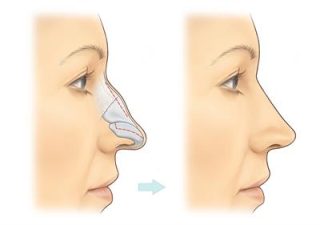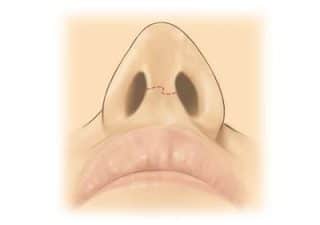Rhinoplasty In Islamabad
A lot of people are unhappy with the size and/or shape of their noses. The nose is central to facial balance and many people opt for surgical nose reshaping, or rhinoplasty, in an effort to find a more harmonious alignment of their features. Sometimes the problem can have more to do with the position of the chin or jaw, but patients tend to focus their dissatisfaction on the nose.
- While surgical techniques are advanced, there are limitations as to how much the nose can be altered.
- Outcomes depend on the size of the nose, the condition of the skin and the age of the patient.
The most important thing is that there is clear communication between a patient and a surgeon about what is wanted and what is achievable.
Nose operations are most commonly carried out to:
- Alter the hump at the bridge of the nose
- Reshape the tip of the nose
- Alter the length of the nose
- Alter the width of the nose
- Alter the width of the nostrils
- Restructure and reposition the nose after an injury
- Open up the nasal airways to help breathing
What are the most common reasons for people wanting nose operations?
Cosmetic reasons
- Most people who dislike their noses have concerns about the bridge or the tip. At the bridge or dorsum, people often complain about having a hump. Meanwhile, people who want to change the tip often see this part of the nose as being too wide, round, blobby, beaked, or lacking in definition.
- Some people also dislike the length of their noses.
Medical reasons
- Some patients may opt for a rhinoplasty because of an injury to the nose, whereby the nose may be broken or bent following an accident of some kind. Others may have functional breathing problems relating to the nasal airways.
- In these cases, surgical interventions would be considered reconstructive, whereas, for the majority of nose operations, the surgery is classed as cosmetic.
What surgery is available, and what techniques are involved?
A nose reshaping operation is either performed from inside the nostrils- this is referred to as a closed rhinoplasty; or by making a small cut on the nose and elevating the skin – known as an open rhinoplasty
The precise nature of the operation will vary depending on the area of the nose that is being treated.
Bridge
If the bridge of the nose is being operated on, the surgeon removes the bone and cartilage that is causing ‘the hump’. The nose may then be broken to allow the remaining pieces of bone to be moved closer together, resulting in the narrowing of the nose.
Tip
When the tip of the nose is operated on, the cartilage that makes up the tip support needs to be partly removed or reshaped. This is done through the nostril, or by making a small cut in the bit between the nostrils (known as the columella) in an open rhinoplasty.
Length
A surgeon can adjust and reduce the central structure of the nose, known as the septum, to help shrink the tip and reduce the overall length of the nose. Adjustment to the tip cartilages also helps adjust the nasal length.
Width
By breaking and repositioning the side nasal bone, a surgeon can also reduce the width of the nose and achieve a narrower appearance.
The above techniques can also be used to straighten and refine a nose that has been broken through injury, and to relieve breathing difficulties.
Who will I see as a patient?
Rhinoplasty operations are conducted by one surgeon with the help of an assistant. Prior to an operation, however, careful examinations will be carried out to determine whether surgery is the right course of action and confirm what can be achieved.
What should I expect in terms of treatment, procedures, and outcomes?
- Operations take between 90-180 minutes, depending on the technique being used.
- Following an operation, patients usually need to spend one or occasionally two nights in the hospital.
- You will need to have a splint held over your nose by tape for seven days, and a pad under your nose for 12 hours
- Allow two weeks off work following a nose operation.
- In terms of exercise, you should be able to walk a distance after three-to-five days and to swim after three weeks, although strenuous exercise should be avoided for four-to-six weeks.
- Most closed rhinoplasty operations (those carried out through the nostril) usually take about two weeks to settle.
- There will be no external scarring, but if a nose is broken as part of the surgery there will be noticeable bruising around the eyes for about seven to ten days, with yellowing around the eyes for 10-20 days.
- As with all operations, there are risks involved. After a rhinoplasty, some patients experience an altered sense of smell, while others find that their nasal breathing is affected.
- Minor bleeding is common while heavy bleeding is very rare but can be severe.
- Some patients experience pain for a number of weeks.
- Slight irregularity in the bone or cartilage may be felt or occasionally seen.
- Some patients will be dissatisfied with the outcome of a nose reshaping operation.
- Usually it is best to accept what improvement has been achieved and not opt for a further operation. However, it is sometimes reasonable to consider a further slight adjustment.
Make sure you talk to your plastic surgeon and are 100% sure before the procedure.


